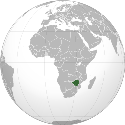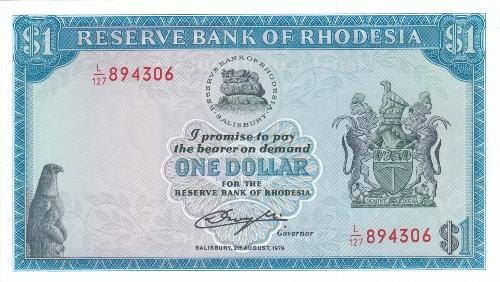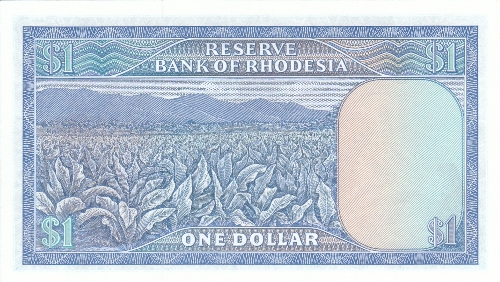Rhodesia

 Rhodesia was an unrecognised state located in southern Africa during the Cold War. From 1965 to 1979, it comprised the region now known as Zimbabwe. The country, with its capital in Salisbury, was considered a de facto successor state to the former British colony of Southern Rhodesia (which had achieved responsible government in 1923).During an effort to delay an immediate transition to indigenous African rule, Rhodesia's predominantly white government issued its own Unilateral Declaration of Independence (UDI) from the United Kingdom on 11 November 1965. The UDI administration initially sought recognition as an autonomous realm within the Commonwealth of Nations, but reconstituted itself as a republic in 1970. Following a brutal guerrilla war fought with two rival black nationalist organisations (Robert Mugabe’s ZANU and Joshua Nkomo’s ZAPU), Rhodesian premier Ian Smith conceded to biracial democracy in 1978. However, a provisional government subsequently headed by Smith and his moderate colleague Abel Muzorewa failed in appeasing international critics or halting the bloodshed. By December 1979, Muzorewa had replaced Smith as Prime Minister and secured an agreement with the militant African factions, allowing Rhodesia to briefly revert to her colonial status pending popular elections. Independence deemed legitimate by Britain and the United Nations was finally achieved in April 1980; the nation was concurrently renamed the Republic of Zimbabwe. A wholly landlocked area, Rhodesia bordered South Africa to the south, Bechuanaland (later Botswana) to the southwest, Zambia to the northwest and Mozambique (a Portuguese province until 1975) to the east. The state was originally named after Cecil Rhodes, whose British South Africa Company acquired the land in the late 19th century.
Rhodesia was an unrecognised state located in southern Africa during the Cold War. From 1965 to 1979, it comprised the region now known as Zimbabwe. The country, with its capital in Salisbury, was considered a de facto successor state to the former British colony of Southern Rhodesia (which had achieved responsible government in 1923).During an effort to delay an immediate transition to indigenous African rule, Rhodesia's predominantly white government issued its own Unilateral Declaration of Independence (UDI) from the United Kingdom on 11 November 1965. The UDI administration initially sought recognition as an autonomous realm within the Commonwealth of Nations, but reconstituted itself as a republic in 1970. Following a brutal guerrilla war fought with two rival black nationalist organisations (Robert Mugabe’s ZANU and Joshua Nkomo’s ZAPU), Rhodesian premier Ian Smith conceded to biracial democracy in 1978. However, a provisional government subsequently headed by Smith and his moderate colleague Abel Muzorewa failed in appeasing international critics or halting the bloodshed. By December 1979, Muzorewa had replaced Smith as Prime Minister and secured an agreement with the militant African factions, allowing Rhodesia to briefly revert to her colonial status pending popular elections. Independence deemed legitimate by Britain and the United Nations was finally achieved in April 1980; the nation was concurrently renamed the Republic of Zimbabwe. A wholly landlocked area, Rhodesia bordered South Africa to the south, Bechuanaland (later Botswana) to the southwest, Zambia to the northwest and Mozambique (a Portuguese province until 1975) to the east. The state was originally named after Cecil Rhodes, whose British South Africa Company acquired the land in the late 19th century.
1 dollar - P30a

